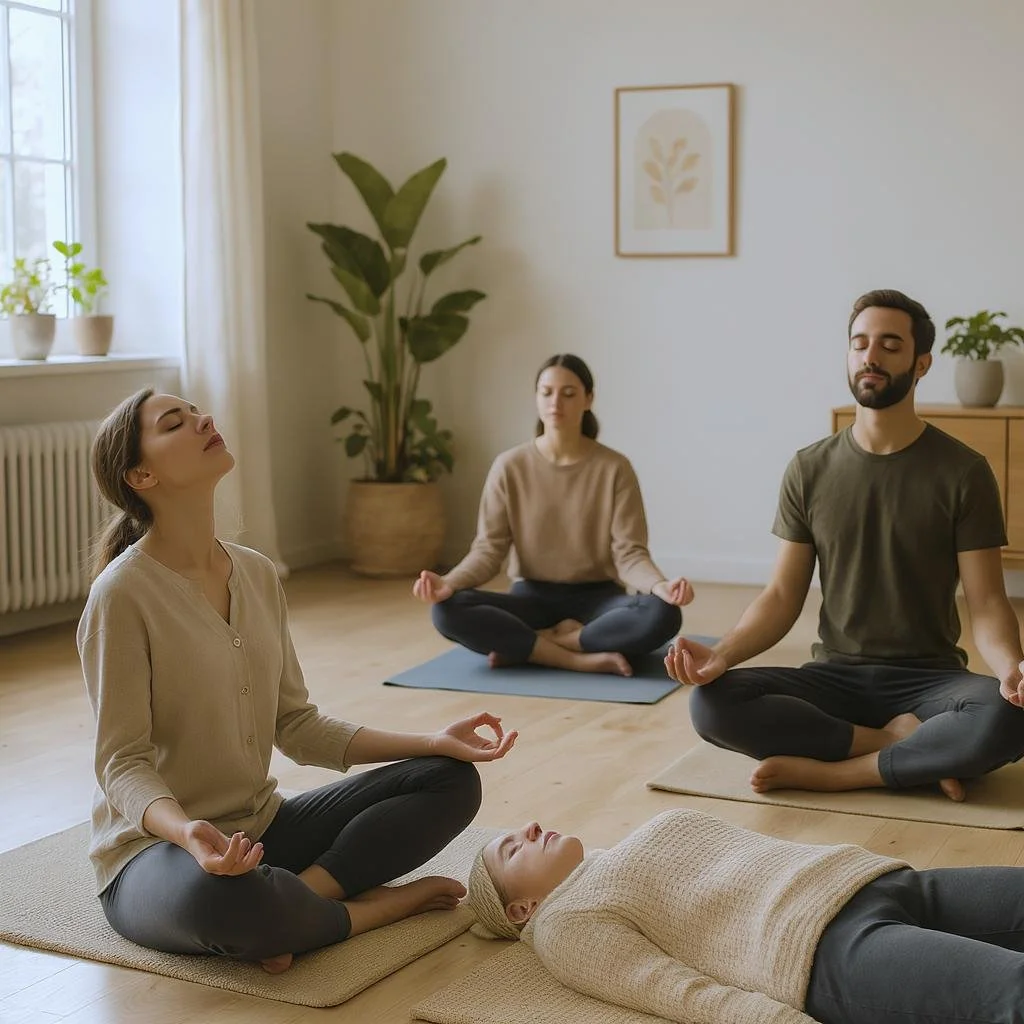What Type of Meditation Is Right for You Right Now?
One Size Does Not Fit All
You sit down. You close your eyes. You try to focus. And instead of peace? You feel… agitated. Or numb. Or like you’re pretending to meditate.
We’ve all been there.
Sometimes, it’s just resistance. But often — it’s actually misalignment.
Because the truth is, the kind of meditation you need evolves as you do.
As your nervous system shifts, your inner awareness deepens, and your life circumstances change — so too should your practice. The ritual that held you six months ago might feel hollow now. The technique that used to ground you might stir up static instead of stillness.
This isn’t a problem. It’s a sign of growth. Meditation is not a one size fits all prescription — its a living, breathing entity that is meant to evolve as you do.
Meditation Is a Living Practice
At its core, meditation is an intimate relationship with presence — and just like any relationship, it needs tending. It ebbs and it flows. It feels harder at times and feels easeful at others.
Some days you crave stillness. Other days, you need movement.
Some seasons ask for silence. Others call for sound, breath, color, or guidance.
When you honor where your system actually is, your practice becomes more effective — and more enjoyable.
“Let your practice be honest, not idealized. Let it reflect who you are, not who you think you should be.”
What Type of Meditation Is Right for You Right Now?
Below are five energetic states you might find yourself in — and the meditation styles that tend to best support each one. This isn’t a prescription. It’s an invitation to listen more deeply.
1. If You Feel Anxious or Scattered → Try: Breath Awareness Meditation
When your thoughts are spiraling or your body feels ungrounded, the breath is your most accessible tool for recalibration.
Breath awareness is simple, rhythmic, and deeply regulating for the nervous system. It doesn’t ask you to quiet your mind — it gives your mind something gentle to follow.
Why it works:
Shifts your attention from thoughts to sensation
Balances the sympathetic (fight/flight) and parasympathetic (rest/digest) systems
Quickly anchors you back into your body
Try this:
Inhale for a count of 4.
Exhale for a count of 6.
Repeat for 3–5 minutes, focusing only on the sound and feeling of your breath.
2. If You Feel Heavy, Disconnected, or Foggy → Try: Somatic Grounding
When presence feels out of reach or you’re emotionally shut down, somatic practices (body-based) can reconnect you to a felt sense of safety.
This isn’t about sitting perfectly still — it’s about letting the body lead. Touch, movement, or gentle pressure can open pathways the mind cannot.
Why it works:
Builds body awareness and trust
Discharges stuck energy through sensation
Calms the vagus nerve and supports emotional regulation
Try this:
Sit with your feet on the floor and hands resting on your belly. Breathe slowly. Feel the weight of your body. Press your palms into your thighs for 30 seconds and release.
3. If You Feel Stuck or Stagnant → Try: Guided Visualization
When your inner world feels dull or you're craving a spark of inspiration, visualization opens creative and energetic channels.
Whether you're imagining a forest, a golden light, or an inner temple, visualization helps you connect to the unseen — and remind your system of what's possible.
Why it works:
Activates the imagination (a spiritual tool)
Bypasses logic to access symbolic wisdom
Increases alpha brain wave states (relaxed awareness)
Try this:
Use a guided journey that walks you through a landscape, energy field, or transformation. Let the images come naturally — no effort needed.
4. If You’re in a Transition or Seeking Clarity → Try: Inquiry Meditation
This is a form of spiritual self-dialogue — a space where you gently pose a question and listen, without pushing for an answer.
It’s powerful for those at a crossroads, moving through loss, or feeling uncertain about what’s next.
Why it works:
Invites intuitive knowing, not mental solutions
Supports spiritual surrender
Helps distinguish fear from wisdom
Try this:
Sit in stillness. Ask inwardly: “What is true for me right now?”
Breathe. Wait. Trust what arises, even if it’s subtle or incomplete.
5. If You Feel Open and Present → Try: Pure Awareness / Presence Practice
In moments when you feel connected and steady, this style of meditation helps you expand that state — without doing anything at all.
You simply sit. You breathe. You notice.
No mantra, no breath count, no visualization. Just presence.
Why it works:
Strengthens non-dual awareness
Sharpens your ability to witness thoughts without attachment
Deepens your experience of unity and stillness
Try this:
Rest your attention on awareness itself. Notice what it’s like to be the space behind the thoughts. Let that be enough.
How Do You Know What You Need?
You already do. Your body knows. Your energy knows. Again, approach this with curiosity and playfulness. Allow for your practice to be something that adds to your life, not something you have to “get right” or perfect. Because, trust me, if you hold your practice with rigidity, it’s only a matter of time until it’s no longer fun and something you feel an overwhelming amount of resistance towards. So, invite yourself to reorient… tune into your body, your breath, and what YOU need.
Here are a few reflection prompts to help you choose:
What feels overwhelming right now?
Where in my body do I feel most alive? Or most tense?
Am I craving softness… structure… surrender…?
Let your practice match your season, not your schedule.
Let SoulPod Support Your Practice
Inside the SoulPod App, you’ll find practices for all of these states — from grounding breathwork and somatic resets to deep inquiry meditations and guided spiritual journeys.
No matter how you arrive, SoulPod meets you there.

